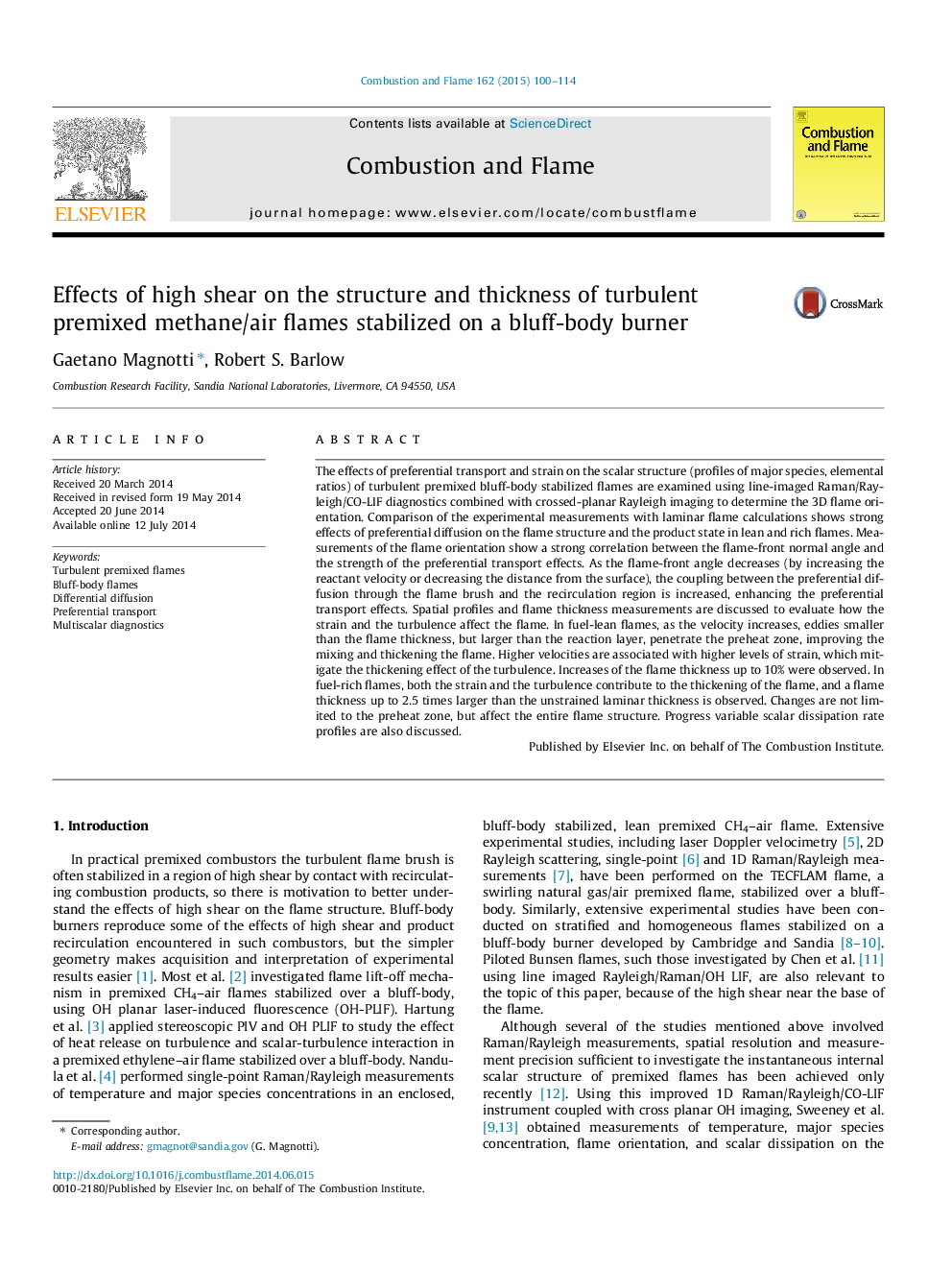| Article ID | Journal | Published Year | Pages | File Type |
|---|---|---|---|---|
| 166352 | Combustion and Flame | 2015 | 15 Pages |
The effects of preferential transport and strain on the scalar structure (profiles of major species, elemental ratios) of turbulent premixed bluff-body stabilized flames are examined using line-imaged Raman/Rayleigh/CO-LIF diagnostics combined with crossed-planar Rayleigh imaging to determine the 3D flame orientation. Comparison of the experimental measurements with laminar flame calculations shows strong effects of preferential diffusion on the flame structure and the product state in lean and rich flames. Measurements of the flame orientation show a strong correlation between the flame-front normal angle and the strength of the preferential transport effects. As the flame-front angle decreases (by increasing the reactant velocity or decreasing the distance from the surface), the coupling between the preferential diffusion through the flame brush and the recirculation region is increased, enhancing the preferential transport effects. Spatial profiles and flame thickness measurements are discussed to evaluate how the strain and the turbulence affect the flame. In fuel-lean flames, as the velocity increases, eddies smaller than the flame thickness, but larger than the reaction layer, penetrate the preheat zone, improving the mixing and thickening the flame. Higher velocities are associated with higher levels of strain, which mitigate the thickening effect of the turbulence. Increases of the flame thickness up to 10% were observed. In fuel-rich flames, both the strain and the turbulence contribute to the thickening of the flame, and a flame thickness up to 2.5 times larger than the unstrained laminar thickness is observed. Changes are not limited to the preheat zone, but affect the entire flame structure. Progress variable scalar dissipation rate profiles are also discussed.
